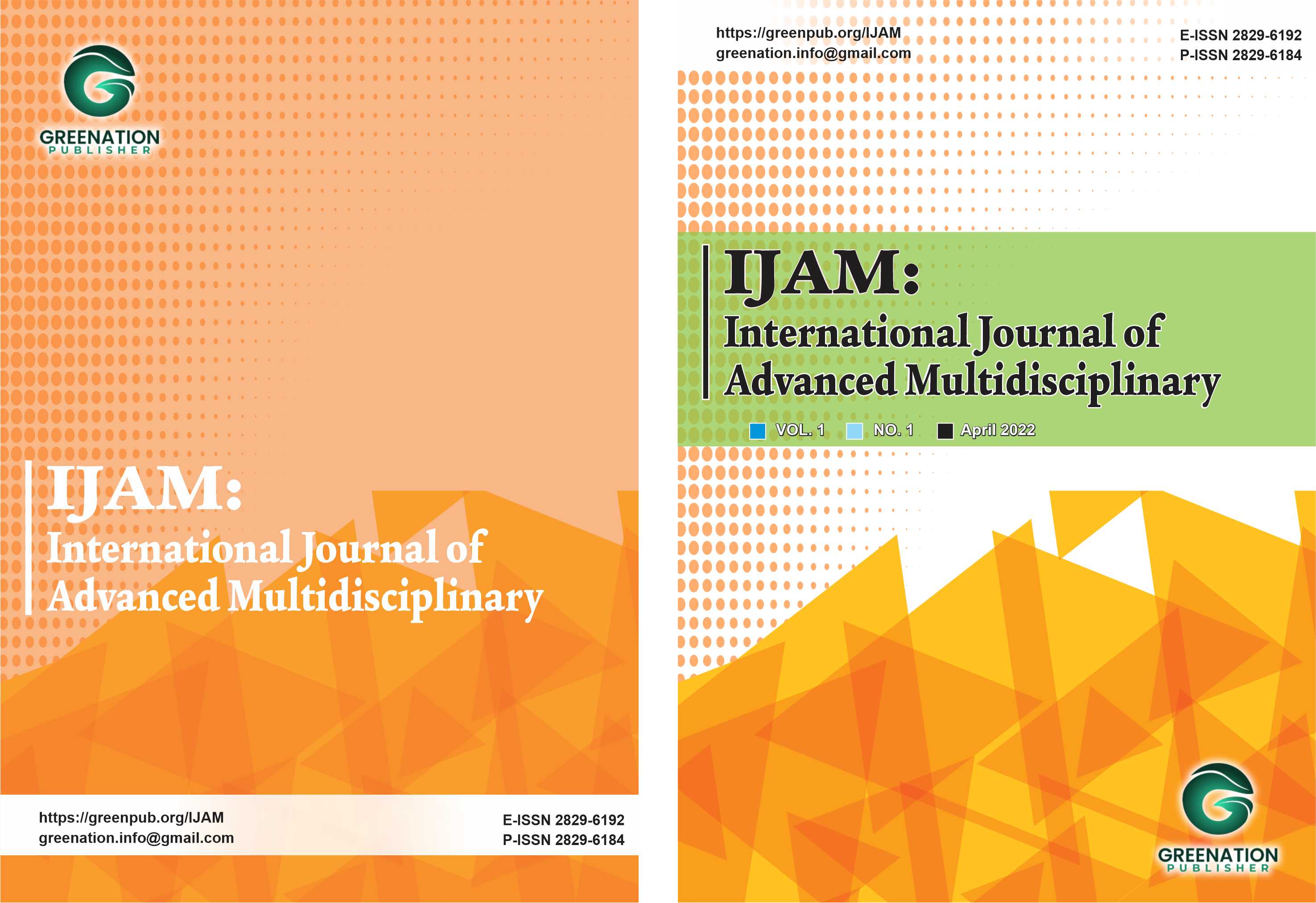Impact of Anthropometric Foot Measurements on Gender-Specific Shoe Design for University Students
DOI:
https://doi.org/10.38035/ijam.v3i4.1326Keywords:
Anthropometry, Foot Measurements, Gender-Specific Design, Shoe Design, University StudentsAbstract
The human foot is a complex biomechanical structure that plays a fundamental role in locomotion, balance, and overall well-being. For university students, who often engage in diverse activities ranging from academic pursuits to sports and social engagements, well-fitting footwear is not merely a matter of comfort but a critical determinant of health, performance, and injury prevention. This study employed a descriptive survey design to investigate anthropometric foot measurements for gender-specific shoe design among university students. A convenience sample of (100) males and (100) females was drawn from the Mechanical and Industrial & Production Engineering departments. Data collection utilized the Arch Height Index Measurement System (AHIMS), capturing standing foot length, width, dorsum height, and truncated length, along with Arch Height Index (AHI) in sitting and standing positions. Data analysis was performed using SPSS, employing descriptive statistics and Pearson's Product Moment Correlation Coefficient at a (0.05) significance level to test hypotheses. Descriptive statistics revealed gender differences; for instance, males had a higher mean standing foot width ([8.8187]) but also greater variability, while females showed larger mean standing foot length ([20.2323]) and dorsum height ([20.2323]). Most distributions were non-normal, with high skewness and kurtosis noted in male foot width and length. Correlation analyses indicated no significant linear relationship between standing foot length and width for either gender (male: r=[0.001], p=[0.994]; female: r=[0.045], p=[0.656]). However, a perfect and highly significant correlation was found between standing foot length and dorsum height for both males and females (r=[1.000], p=[0.000]). Lastly, no significant correlation existed for standing truncated length between genders (r=[0.060], p=[0.554]). These findings underscore the necessity of a multi-dimensional, gender-specific approach to shoe last design. The study concludes that footwear for university students must move beyond generic models, incorporating precise anthropometric data to ensure optimal fit, comfort, and support, thereby preventing foot-related issues and enhancing overall well-being.
References
Branthwaite, H., & Chockalingam, N. (2019). Everyday footwear: an overview of what we know and what we should know on ill-fitting footwear and associated pain and pathology. The Foot, 39, 11-14.
Charmode, S. H., & Kadlimatti, H. S. (2019). Correlation of foot dimensions with body weight–A study in young population of central India. Translational Research in Anatomy, 16, 100043.
Chiroma, S. M., Philip, J., Attah, O. O., & Dibal, N. I. (2015). Comparison of the foot height, length, breadth and foot types between males and females Ga’anda people, Adamawa, Nigeria. IOSR J Dent Med Sci, 14(8), 89-93.
Ezawa, Y., Nakatsugawa, T., & Maruyama, T. (2024). Foot torsional stiffness exhibits gender differences but shows no correlation with medial longitudinal arch height. Journal of Biomechanics, 175, 112293.
Grandjean, E., & Oldroyd, H. (1980). Fitting the task to the man: an ergonomic approach (Vol. 387). London: Taylor & Francis.
Guo, Y., Jia, Y., Wu, Y., & Zhu, X. (2025). Longitudinal Bending Stiffness Analysis of Composite Carbon Plates and Shoe Sole, Based on Three-Point Bending Test. Applied Sciences, 15(5), 2785.
Limon, M. I. K., Uddin, M. E., Hossin, M. M., & Rahman, M. S. (2023). Development of new shoe sizing system for women based on regression analysis of foot shapes. International Journal of Industrial Ergonomics, 94, 103408.
Mbuba, F. (2022a). The bravo of human capital development and employee productivity in the Ministry of Information, Awka. International Journal of Academic Information Systems Research (IJAISR), 5(2), 82–92.
Mbuba, F. (2022b). Children's right and human trafficking: Less talk, more action. More Action (August 10, 2022).
Mbuba, F. N. (2016). Public sector reforms and sustainable development in Nigeria: A critique. Policy, 8(1), 50–60.
Okafor, C. E., Iweriolor, S., Nwekeoti, C. A., Akçakale, N., Ekwueme, G. O., Ihueze, C. C., & Ekengwu, I. E. (2024). Intelligent modeling of carbonized wood-silicon dioxide filled natural rubber composite for outer shoe sole manufacturing. International Journal of Lightweight Materials and Manufacture, 7(1), 72-86.
Okafor, C. E., Okpe, D. U., Ani, O. I., & Okonkwo, U. C. (2022). Development of carbonized wood/silicon dioxide composite tailored for single-density shoe sole manufacturing. Materials Today Communications, 32, 104184.
Saha, M. (2022). Designing Interactive Data-driven Tools for Understanding Urban Accessibility at Scale. University of Washington.
Scovel, S. (2020). Chapter 15: One Step Forward; Equality in Women’s Wrestling Shoes and Uniforms?. In Sportswomen’s Apparel Around the World: Uniformly Discussed (pp. 257-272). Cham: Springer International Publishing.
Silva, O.F.D., da Silva, J.M.N., Silva, L.K.D., Lima, T.D.F.M., Bornia, A.C., Souza, L.A.H.D., Leite, W.K.D.S. and Vieira, E.M.D.A., (2022). Do men and women have different musculoskeletal symptoms at the same musculoskeletal discomfort level?. Ergonomics, 65(11), pp.1486-1508.
Wang, M., Song, Y., Zhao, X., Wang, Y., & Zhang, M. (2024). Utilizing anthropometric measurements and 3D scanning for health assessment in clinical practice. Physical activity and health, 8(1), 182-196.
Downloads
Published
How to Cite
Issue
Section
License
Copyright (c) 2025 Chibuzo Ndubuisi Okoye, Steven Emenike Atuegbunam, John Chikaelo Okeke, Augustine Uzodinma Madumere, Sunday Chimezie Anyaora, Nkechinyelu Ifeatu Ezeaku, Emmanuel Chukwudi Nwanna

This work is licensed under a Creative Commons Attribution 4.0 International License.
Authors who publish their manuscripts in this journal agree to the following conditions:
- The copyright on each article belongs to the author(s).
- The author acknowledges that the International Journal of Advanced Multidisciplinary (IJAM) has the right to be the first to publish with a Creative Commons Attribution 4.0 International license (Attribution 4.0 International (CC BY 4.0).
- Authors can submit articles separately, arrange for the non-exclusive distribution of manuscripts that have been published in this journal into other versions (e.g., sent to the author's institutional repository, publication into books, etc.), by acknowledging that the manuscript has been published for the first time in the International Journal of Advanced Multidisciplinary (IJAM).























